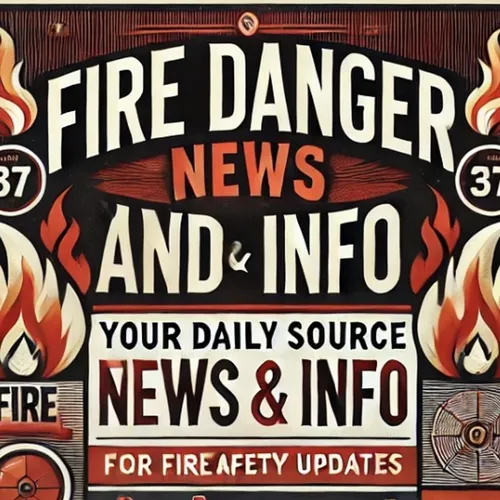Brace for Scorching Wildfire Season: Heightened Danger Across the West
- Author
- Quiet. Please
- Published
- Sat 02 Aug 2025
- Episode Link
- https://www.spreaker.com/episode/brace-for-scorching-wildfire-season-heightened-danger-across-the-west--67231122
Across the United States, fire danger remains a significant threat as the peak of wildfire season arrives in many regions, with this week bringing heightened concern and active incidents. According to the National Interagency Fire Center, wildfire potential is above normal for every county in Oregon for the months of August and September, driven by a forecasted forty to seventy percent chance of above-average temperatures, especially near the Idaho border. The Oregon Department of Forestry has noted that August and September typically mark the state's worst fire months, and the current outlook is particularly grim. These elevated temperatures, paired with persistent dry conditions and no clear trend for increased precipitation, are setting the stage for a hazardous season, prompting warnings and preparedness measures statewide.
In Washington, all campfires have been banned in both Olympic National Park and Olympic National Forest beginning August first, a move authorities say is necessary as drought and high heat have pushed fire danger to very high levels. Officials urge caution with any devices capable of producing flame, even in designated wilderness areas, and emphasize that fireworks continue to be strictly prohibited on federal lands. The public is reminded to follow all safety restrictions, maintain vehicles to prevent accidental ignitions, and report any new fires immediately.
Meanwhile, the Southwest and portions of the Rockies are experiencing their own surge in fire danger. The Dragon Bravo Fire on the north rim of Grand Canyon National Park has now burned over one hundred eleven thousand acres and remains only nine percent contained. In Utah, the Monroe Canyon Fire has consumed over fifty-five thousand acres and is just five percent contained, leading to evacuation orders in affected areas. Fire weather alerts are in effect across these states, driven by relative humidity readings under ten percent and wind gusts up to thirty-five miles per hour. Extreme heat warnings persist for cities like Phoenix and Tucson, with temperatures forecast to reach as high as one hundred fifteen degrees over the coming days.
Wildfire smoke remains a widespread issue. Smoke from hundreds of Canadian wildfires continues to blanket the Midwest, prompting air quality alerts across Minnesota, Wisconsin, Michigan, Iowa, and Illinois. Cities such as Chicago and Minneapolis are currently experiencing some of the world's worst air quality, and the haze has stretched as far as the interior Northeast. Active wildfires in the western United States are contributing additional haze and localized air quality impacts, though formal alerts are not in place for those particular zones.
The situation demands public vigilance. State and federal agencies continue to issue daily updates, urging everyone to monitor changing conditions, comply with fire restrictions, and prioritize actions to reduce human-caused wildfires as the risk remains elevated nationwide. This combination of record temperatures, persistent drought, and widespread active fires sets the stage for an unusually intense fire season across much of the western United States.
Some great Deals https://amzn.to/49SJ3Qs
For more check out http://www.quietplease.ai
